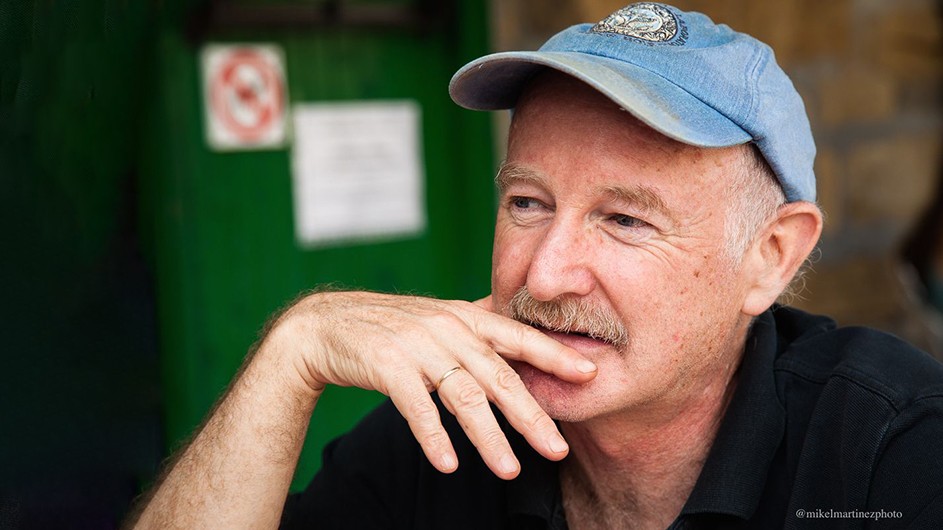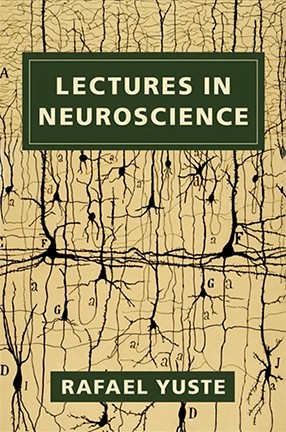A New Book Looks at the Human Brain in All Its Complexity
Rafael Yuste provides a unified framework for how the brain functions in “Lectures in Neuroscience.”

The human brain is one of the most intricate objects in the known universe. Through a mysterious process, the activity of billions of neurons within a few pounds of matter generates the mind’s complexity.
In Lectures in Neuroscience, Rafael Yuste, a professor of biological sciences and director of the NeuroTechnology Center, provides an accessible introduction to the brain. Beginning with basic elements of neuroscience, he guides readers through increasingly sophisticated topics, developing a unified framework for how the brain functions. Yuste describes how the brain is organized and how it develops, how neurons operate and form neural circuits, and how these circuits function as neural networks to generate behavior and mental states.
Yuste challenges the traditional view that the brain is an input-output machine that reacts reflexively to sensory stimuli. Instead, he argues, the purpose of the brain is to make a predictive model of the world in order to anticipate the future and choose successful courses of action. He offers insights into the workings of sensory and motor systems and the neurobiological basis of our perceptions, thoughts, emotions, memories, and consciousness.
Yuste talks about the book with Columbia News, along with what he’s reading and recommends, what he’s teaching, and who he would like to invite to his next dinner party.
How did this book come about?
The book is a reflection of my lectures in the undergraduate class that I’ve been teaching at Columbia since 1996—Neurobiology 2: Developmental and Systems Neuroscience, which deals with how the brain develops and what it does. After decades of struggling with encyclopedic textbooks that buried students in a sea of details, I decided to have a go at it and write my own. I focused on what I think are the most important things and ideas, with a light touch. I want readers to feel as if they’re attending the lectures.

Can you discuss your view of the brain as a predictive model of the world/future, as opposed to the more traditional view of the brain as an input-output machine?
Most people, and most neuroscientists also, think that the purpose of the brain is to generate behavior, turning its sensory input into a motor output. It’s like a machine that takes external information and produces behavior. The view that I defend—which, by the way, has deep roots in the history of philosophy, going back to Immanuel Kant—is that the brain is a different type of machine. It works internally to create a model of the world. The brain constructs the reality that we live in, that we think we live in. And it uses that model to predict the future, which is absolutely critical if you want to survive on an evolutionary level and anticipate what is going to happen.
In other words, the brain generates intelligence. From this point of view, the brain takes information from the sensory systems to update and refine the model. Sometimes there is a behavior, sometimes not. So, if you want to understand what the brain does, you have to focus on the internal machine and the model, not on the behavior.
What books have you read lately that you would recommend, and why?
I am in the middle of reading the Mars Trilogy, a set of three science fiction novels by Kim Stanley Robinson about the early colonists of Mars. My favorite book of all time is Daniel Defoe’s Robinson Crusoe, and the trilogy is similar, but with a lot of science sprinkled in.
What's next on your reading list?
American Prometheus, the biography of J. Robert Oppenheimer by Kai Bird and Martin J. Sherwin, which the Oppenheimer movie is based on.
What are you teaching this fall?
Independent Research in Biological Sciences. In this course, I oversee about 80 undergraduates, who are doing research projects in different labs in the Biology Department and also at Columbia University Irving Medical Center.
What are you working on now at the NeuroTechnology Center?
We are deep into the study of the consumer user agreements of 30 neurotechnology companies in the U.S. and around the world. That means reading the small print that no one reads, which you have to agree on in order to turn on a device or download software. We’re doing this because we are concerned with the lack of legal protection for brain data.
Neurotechnology is becoming more potent, and so are the artificial intelligence algorithms to decode brain data. We want to protect mental privacy and ensure that the information from our brains remains private. This is because the mind, that model of the world I was talking about earlier, is written with brain data.
You're hosting a dinner party. Which three neuroscientists/scholars, dead or alive, would you invite, and why?
The Spanish neuroscientist, pathologist, and histologist Santiago Ramon y Cajal—my hero, and the reason I became a neuroscientist. He died in 1934, just as the first articles on neural networks were being published. I would love to see how he would integrate his knowledge with the new ways of thinking about the brain. Also, he was a methods person and a tinkerer, and I am sure that all the modern neurotechnology we are developing would resonate with him.
Of course, Immanuel Kant, whom I consider an early neurobiologist, as he came up with deep insights into how our perception and our minds work. We are finally testing (and confirming) many of his ideas in the lab.
Lastly, my mentor, the South African biologist Sydney Brenner, who died in 2019, and who turned me into a full-fledged biologist, leaving medicine behind. The last time I spoke with him, he changed the trajectory of my career, and I would enjoy getting his advice and having one last laugh with him. He was the smartest (and funniest) person I ever met.
Check out Books to learn more about publications by Columbia professors.